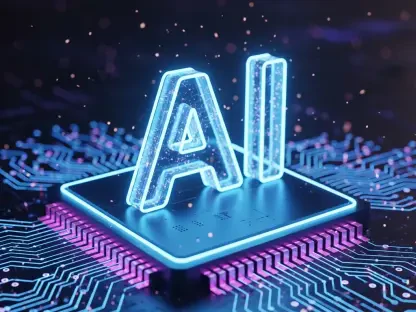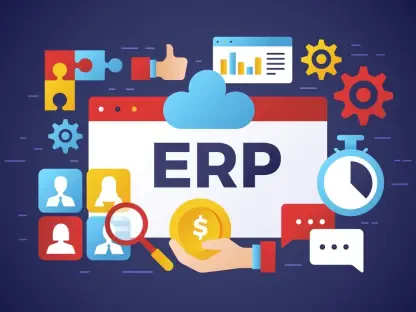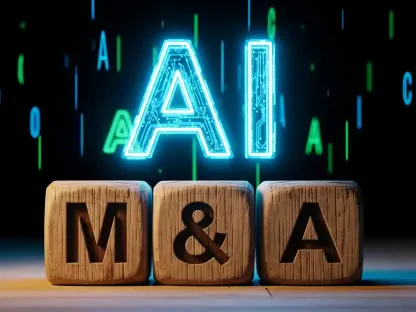I’m thrilled to sit down with Vijay Raina, a renowned expert in enterprise SaaS technology and software design. With his deep expertise in software architecture and thought leadership in the field, Vijay offers unique insights into the evolving role of AI in professional services. Today, we’ll dive into the implications of major AI partnerships, the customization of AI tools for specific industries, the importance of ethical AI deployment, and the challenges of ensuring accuracy in AI-generated outputs. Let’s explore how these advancements are shaping the future of work.
How do you see major AI partnerships, like those involving enterprise-wide deployments of chatbots, transforming the daily operations of large organizations?
These partnerships are game-changers for large organizations. Deploying AI tools like chatbots across hundreds of thousands of employees can streamline workflows, automate repetitive tasks, and enhance decision-making. For instance, in a professional services firm, a chatbot can assist with data analysis, client queries, or even drafting reports, freeing up time for strategic work. However, the real transformation comes from how these tools integrate into existing systems, ensuring they’re not just add-ons but core components of operational efficiency.
What’s your take on the concept of creating AI agent ‘personas’ tailored to specific departments, such as accounting or software development?
I think it’s a brilliant approach. AI personas are essentially specialized virtual assistants designed to understand the unique language, processes, and challenges of a particular department. For accountants, the persona might focus on compliance and financial modeling, while for developers, it could assist with code debugging or architecture design. Customization is key here—it’s about embedding domain-specific knowledge into the AI so it feels like a true colleague rather than a generic tool.
How can organizations ensure these tailored AI personas don’t lead to over-reliance, potentially sidelining human expertise?
That’s a critical concern. The goal should be augmentation, not replacement. Organizations need to establish clear guidelines on when and how to use these AI tools, ensuring they complement human judgment rather than override it. Regular training and feedback loops are essential to keep employees engaged and to remind them that AI is a decision-support tool. It’s also about fostering a culture where questioning AI outputs is encouraged, especially in high-stakes scenarios.
When it comes to using AI in regulated industries like financial services or healthcare, what are the biggest hurdles in developing compliant solutions?
Regulated industries face stringent rules around data privacy, accuracy, and accountability, which makes AI deployment tricky. The biggest hurdle is ensuring the AI adheres to these standards while still delivering value. For example, in healthcare, an AI tool must handle sensitive patient data with ironclad security and comply with laws like HIPAA. Developing these solutions requires close collaboration with legal and compliance teams to bake in safeguards from the ground up, rather than as an afterthought.
How can companies balance the push for AI innovation with the ethical responsibility to minimize risks and ensure safety?
Balancing innovation and ethics is about setting a strong foundation of principles early on. Companies need to prioritize transparency—understanding how AI models make decisions—and implement robust testing to catch biases or errors. It’s also about accountability; there should be clear ownership of AI outcomes. For instance, if an AI tool is used in client-facing work, there must be mechanisms to audit its suggestions. Ethics isn’t a checkbox; it’s an ongoing commitment that requires constant vigilance as technology evolves.
We’ve seen instances where AI-generated content, like reports, contained significant errors or fabrications. What lessons can organizations learn from such setbacks?
These incidents are a wake-up call. The primary lesson is that AI outputs can’t be taken at face value—they require rigorous human oversight. Errors often stem from insufficient validation processes or over-trust in the technology. Organizations must invest in layered review systems where AI-generated content is cross-checked by subject matter experts. It’s also crucial to train AI on high-quality, verified datasets to minimize hallucinations or inaccuracies from the start.
What steps should be taken to rebuild trust with stakeholders after an AI-related error, especially in high-profile or government-contracted projects?
Rebuilding trust starts with transparency. Acknowledge the error openly, explain what went wrong, and outline the corrective actions taken. In high-profile projects, like government contracts, it’s vital to demonstrate accountability—whether that’s through refunds, revised deliverables, or public apologies. Beyond that, showing a commitment to improvement by updating processes and sharing lessons learned can turn a misstep into an opportunity to strengthen credibility over time.
What is your forecast for the role of AI in professional services over the next decade?
I believe AI will become deeply embedded in professional services, evolving from a novelty to a core driver of value. We’ll see AI not just automating tasks but enabling hyper-personalized client solutions and predictive insights at scale. However, the trajectory depends on how well the industry addresses challenges like ethics, accuracy, and regulation. If done right, AI could redefine service delivery, making firms more agile and client-centric. But it will require a delicate balance of innovation and responsibility to get there.









